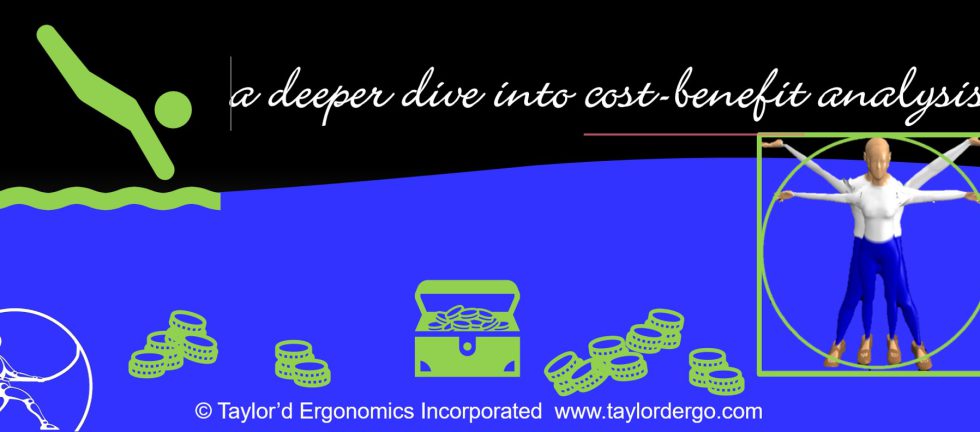For most of my career, I’ve been single-minded in my focus on minimizing the risk of strain/sprain injuries. I’m not alone; most ergonomists work in a “safety” capacity, concerned mainly with keeping the demands of the workplace within the physical capabilities of the workforce. We might occasionally concern ourselves with cognitive demands (some much more than others, of course), and we might be asked to weigh in on issues where the worker’s primary complaint appears to stem from something other than musculoskeletal discomfort. But ergonomics can benefit organizations in a much broader sense. We’re really missing the boat, and we want to board!
In most workplaces, “human error” is blamed for mistakes, defects, and production errors. But what causes humans to make errors? If we dig deep enough, we’re likely to find that our “humans” are working within a system that is not designed for them. Similarly, when production systems fail, it may be because a machine failed. Just as often as not, however, the problem stems back to a person who can’t keep up to the demands of the job, which creates a bottleneck.
Thankfully, these errors and failures can be corrected!
Every supervisor can tell you which jobs they have trouble filling. These are the jobs they are always training new people to do, jobs that everyone wants to get out of, or jobs that only one person can do well. Why are these jobs problematic? Has anyone considered that there might be “ergo” issues with these jobs, even if no one stays in the job long enough to report an injury?
When ergonomists determine that a job’s demands exceed a worker’s capabilities, we say that the risk of injury is high, and suggest improvements to the job. If injuries have already occurred, then we will suggest that some of those injuries and associated costs could be avoided in the future if the change is made. This is the most typical approach that we take to justifying an ergo intervention. However, if the job has not yet been associated with injuries, it’s difficult for management to understand why they should invest in a change.
But what if we dug a little deeper? What if we really tried to understand the full impact of that worker-job mismatch? What else is happening because the worker is fatigued? And what are the costs of these downstream issues?
The costs, while fuzzy and often hidden, are very real. Most organizations are good at quantifying the costs of “defects” that leave the facility – customer returns, for example. But most quality defects are, thankfully, caught and corrected in-house, typically at considerable cost. If you have 2 full-time inspectors on every shift, for example, their time is valuable. Are they spending half of their time dealing with one common defect? Couldn’t their time be better spent if that defect was corrected? Is the same problem being “reworked” over and over?
We want to answer these questions. Which is to say, we want to figure out what questions to ask, to get the answers. And this challenge forms the basis for a research project that one of our ergonomists, Victoria, will be driving in September. How do we, as ergonomists, figure out what the real cost of an ergonomics issue is? Knowing this, how can we cost-justify an ergonomics intervention, even when injuries have not yet occurred?
We are looking for industry partners for this research project. If your organization has struggled to cost-justify an ergonomics intervention, maybe we can help! We want to take these tough projects and look for opportunities to cost-justify based on quality, productivity, and morale parameters. We want to talk to people in your organization to learn the language of your business, and figure out how quality, productivity, and morale are translated into dollars. We want to help you figure out, “If we make this change, what impact will it have on my company, financially?” Ultimately, we want to develop a protocol for other ergonomists to follow, to help cost-justify future projects.
Please ask me for info or set up a meeting with me, here. We have a few “partner” spots left. Yes, there is a small cost associated with partnership in this project, but most of the project will be funded, and will be completed in conjunction with Fanshawe College.


